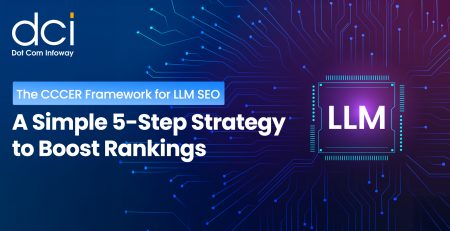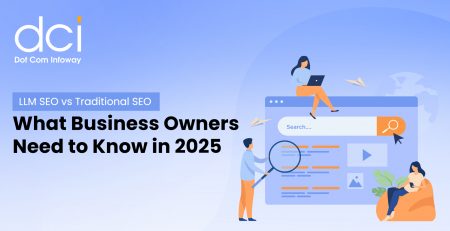What is Search Engine Optimization? A Step by Step Guide to Success
What is SEO?
SEO refers to search engine optimization. This is the practice of growing visibility for your website to attract quality traffic using organic search engine results. It includes building websites that are search engine friendly as well as having sites that perform better for users. This digital marketing guide outlines all essential areas of SEO.

How Search Works?
Search engine optimization help people find the things they are looking for on search engines. When users type a particular keyword on search engines such as Bing and Google, websites that have content related to the keyword come up. For instance, if you search ‘decorating tips, the pages with decorating ideas that are well optimized appear top of the search results.
Those websites with strong solid domain authority usually come up on the first pages. This is because search engines utilize tools like web spiders to collect the content of all websites on the Internet. This information is essential in creating indices that determine how websites show up when users search on the internet. The websites that employ the best SEO practices usually rank top on the search engines. Google ranking follows some guidelines called Good Webmaster Guidelines.
Why Google Webmaster Guidelines?
The Google Webmaster Guidelines refers to the best actions that website owners should follow to make their websites to be better crawlable or indexable by Google. These guidelines are classified into three categories.
They include:
- Technical guidelines
- Design and content guidelines
- Quality guidelines.
Google Webmaster Guidelines enables relevant site content to rank high when people search keywords on Google. This helps in removing all the Spam sites on Google. It also allows users to find quality content when they search on Google.
On-site SEO
On-Site SEO also called On-Page SEO involves Google ranking factors that are directly connected to the page you want to optimize. These can include the content of the site, keywords, AMP, Header Tags, Image Optimization, meta URL, and architecture.
1. Meta Description
Meta Description is an HTML element that provides additional information about a page for users searching for information. This element provides description and summary of the contents of a page. This plays a vital part in On-Site SEO. The main reason for meta description is to make visitors on Google to follow your link. Meta descriptions act as ‘organic ad text’. Great meta descriptions should include your target keyword, have relevant content and should look appealing to users.
2. Site Structure
Site structure entails the experience users and search engines get when they navigate your site. To improve SEG rankings, a great architecture is a must have. A good website structure allows for a good experience for visitors. Such a site has a speedy loading time, easy navigation and safe connectivity. Users should also be able to get the content they are looking for in the shortest time possible. Some of the things to consider for an effective site structure for SEG purposes include; designing your website for a global audience, optimize your site to be viewable from mobile devices, creating a sitemap, having simple but consistent URL, and supporting only secure websites.
3. Keywords
The most important part about keywords is finding the keyword that is mostly searched by users. This will enable you to understand what users are looking for. When choosing your target Keyword make sure you concentrate on the intent of what users search. Intent will enable you to create content that will attract quality traffic. Also, the keyword should align with your business and one that is not too competitive. Keywords that are too competitive will barely give you the traffic you require.
After finding your target keyword, then its time to use it well in your content and give users what they want. Always sprinkle your keywords throughout your content but avoid jamming it into your articles. Keyword stuffing can do more harm than good to your ranking. You should also ensure you include your keywords in strategic places like headlines and URLs.
4. Content
When a user searches on Google, the search results displayed will try to give the user exactly what they are looking for. Content is, therefore, an essential On-Page Google ranking factor. If you provide quality content on your page, chances are more people will see it when they search on Google. To help you create content that ranks high on Google, here are some factors to consider:
- Quality of content: This entails having longer content with more depth. Longer and in-depth content tends to have more information and will most likely answer all the questions a user is asking. Also, your content should be clear enough to enable Google to identify it as an answer to a given query. Content that provides direct answers appears beneath the search bar.
- Fresh content: While most people prefer posting their content more frequently to enhance their rankings, research has shown posting new content also gives good results. You can do this by rewriting your published content.
5. Header Tags
These are usually the titles of a post or headlines that come up on tabs of browsers when opening a new page. For HTML, the header tag is often the largest text. For titles to be clear on Google’s eyes, there should be only one hl-tag. When creating header tags for your web page ensure its at the topmost part of the page. You can also include target Keywords on the header tag to enable your page rank higher. Google always you to put more than one header tag but its always advisable to break them into multiple pages as h2, h3 etc.
6. Image Optimization
Optimizing web images involves resizing images to the right size and format, high resolution without compromising their quality. One of the tools you can use to optimize images is the ImageKit. Image optimization makes image attractive hence making them rank high on Google and other search engines. It also improves page load speed, boosts conversion as well as enhancing engagement with users.
7. Accelerated Mobile Pages
The AMP project is created to give the web users a great experience. It strives to build fast websites and ads to allow distribution of quality content across all platforms. If you publish your ads and web pages using the AMP open source format, users will engage with your content more often than your competitors. This AMP web page helps improve your ranking on the search engines.
Off-Site SEO
Off-site SEO also called off-page SEO are the actions you perform outside your website to improve rankings on SERPs. This process involves optimizing aspects that link to your website. Off-site SEG primarily entails building links.
1. Link Building Concept
Link building refers to the process of building links to your website. Hyperlinks enable users to move through the Internet from one page to another. Building links are therefore one of the most important parts of any SEO campaign. Building high-quality hyperlinks give your website an edge over the others. This is because websites with high-value backlinks tend to rank higher than similar sites without backlinks. Search engines crawl the web using links and take content from websites. They then add this content to their indices to determine whether the page has the required quality to be ranked high.
Link building is important for all businesses due to its benefits. The following are some of the benefits of link building for your business:
- Building strong relationships
- Enhancing your brand
- Attract quality inbound traffic
- More exposure
In order to get backlinks to your website, the following are some of the factors to consider;
Quality of links
In building links the most important thing to have in mind is quality is better than quantity. Quality backlinks entail reaching to the right sources. Having many links at the expense of quality may not be beneficial because of a number of reasons.
- Search engines usually ignore links that are considered spammy or low quality.
- Links from other sites are better considered than from the same website.
- Links that come from new sites are more valuable than those that are repeated from existent websites
Anchor text
This is the text that is used by other sites that want to link to your site. A good anchor text should sound as natural as possible. The most commonly used words as anchor text to link your site are ‘click here’.
Number of links
The number of links to your site also matter in the long run. Usually, the site with the most high-quality links beats other competitors
2. Link Building Types
There are many types of links you can build to grow your website. These links can work independently but it is advisable to maximize the advantage of taking a combination of each. The following are four types of links you can build
Natural Links
These types of links help in raising the search position when users search certain keywords. These types of links can be created by making sure your anchor text contains the keywords. Some of the ways to have these kinds of links are through article marketing, guest blogging where you insert your text link in the content or commenting on other blogs
Reputation Building Links
Search engine optimization can be used to manage the reputation of your company. This can be done by using your company name as the anchor text. In addition to the main website, these links can be built to your blogs and social profiles. This can be done by using your company name as anchor text. Also, you can add your social profile on social media platforms like Twitter as well as blog commenting using your name as anchor text.
Traffic Generating Links
These links assist in increasing the exposure of your website on high traffic pages. This is done in order to get referral visits from such pages. Traffic tools like Google AdPlanner can help in determining whether a page is worth a traffic generating link. There are several ways to carry out traffic generating links. They can be done through social mentions, forum posts, text links just to mention a few.

An Ultimate Guide to Digital Marketing
How should a business create an effective digital marketing strategy to build a strong online presence?
Our step-by-step guide will help you understand the digital marketing landscape, and provide you with various marketing strategies to maximize your efforts.
Google Ranking Factors
There are over 200 factors that Google use to rank websites. These factors are never put into public domain. When users input keywords, Google uses algorithms to search for the content admissable to the query of the users. The Google factors determine the relevancy of the content.
Here are some of the important Google ranking factors.
1. Content
According to Andrey Lipattsev, a Search Quality Senior Strategist at Google, Content is among the most essential Google ranking factors. Google has however changed how it evaluates content as a ranking factor. Today, more focus has been put on the relevancy of the content rather than on inclusion of keywords in the content. For content to be considered relevant, it must be comprehensive and easy to read. This is to mean that all the details that you may want to know about the thing you are searching should be included in a clear manner For instance when you Google “Persian Cat”, relevant content should be able to highlight the characteristics of this breed of cats, the food they eat, history, where they can survive best and even their health care.
How to optimize?
It also important to note that content affects other Google ranking factors like CTR and bounce rate. You should, therefore, ensure your content is long-form and relevant. You can use content auditing software to check on your content and fix it To rank better, you should make sure your content explores very few topics but in great depth.
2. Backlinks
Backlinks play an important role in google ranking. The more the links you have the higher the ranking. It is essential to ensure your links are from authoritative domains since Google removes bad links which can hurt your ranking. In order to have strong backlinks, you should create interesting and relevant content that people want to read and share it When more people and industry leaders read your content and link to it, Google usually reads the anchor text that matches your backlink hence considering your backlinks to be high quality and your content relevant.
How to optimize?
Link building can be done in various ways but the sole most important way is to create high-quality content and promote it. You should also monitor your links to check on their quality using a link auditing software. This software can also help you get rid of low-quality links as well as to get high-quality backlinks.
3. Mobile-First User Experience
Another important Google ranking factor is mobile optimization. The most viewed domains according to SearchMetrics use mobile-friendly versions instead of the desktop versions. Therefore, if you are looking to make your site more visible, ensure it responds to mobile platforms. And the content should be identical to the one on the desktop site You should also make sure your mobile version works well. A broken mobile version does more harm than good to your website ranking. A website with good user experience will rank better in Google rankings. SearchMetrics states that desktop websites should load for at most 3 seconds, the mobile versions, on the other hand, should take a maximum of 2 seconds to load.
How to optimize?
There are tools like the Structured Data Testing tool you can use to verify that your mobile version and Desktop version are identical. You can also gauge your page speed using tools like Pagespeed Insights. In case your page is slow, find the elements that are slowing your website using an auditing tool and fix them.
4. Technical Factors
There are various technical factors that can contribute to good rankings on Google. Some of these factors include:
- Encryption – According to Google, sites that have a strong HTTPS encryption rank better compared to those with HTTP.
- Anchor text – Anchor text is important Google ranking factors. These factors need to be natural and diverse to improve ranking further.
- Headings – SearchMetrics found that pages that use H1 and H2 are more likely to rank better than those without. According to them, headings and higher rankings have a positive correlation.
How to optimize?
You should avoid all the intrusive interstitials on your site as well using the HTTPS encryption for your website. You should ensure you use semantically relevant anchor text and headings in your content.
5. Other factors
- Domain Factors which are related to backlinks for the whole website.
- Page-Level Factors which are related to the backlink of the page you are going to rank.
- Site-Level Factors that check the quality and how admissable the content of a page is.
- Page-Level, Keyword-agnostic factors that check aspects of the page that are not related to the keyword.
- User Interaction which the experience of the user.
- Domain- Level, special Google algorithm they check the how the brand and keyword are related and how important the brand is.
- Domain-Level, Use of Keyword- Factors that evaluates the keyword.
- Domain- Level, On-Site Webspam Factors that asses your websites quality content.
- Page Level, Off-Webspam factors. This evaluates how the web page performs on social media.
Conclusion
Today, SEO is an important aspect every business must utilize. If done well, this digital marketing strategies can help your business beat competition. All you need to do is follow the basics of SEO discussed in this digital marketing guide to the letter, and you will reap the benefits.















